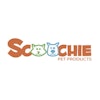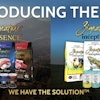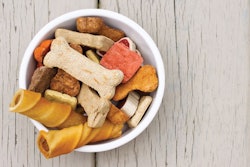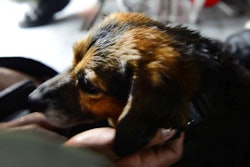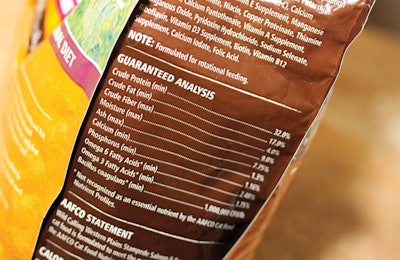
The 2017 Association of American Feed Control Officials (AAFCO) annual meeting was held on August 10–12 in Bellevue, Washington, USA. The first order of business at AAFCO meetings is always the Association Business Meeting, where the general membership votes on all matters that have been brought up through the various committees and passed by the board of directors since the previous meeting.
While a number of matters were voted on, the one of direct interest to pet food manufacturers was the revised guideline on dental-related claims on pet food, treat and chew products. This was approved and will appear as revised in the 2018 Official Publication. Once in effect, dental-related claims on pet product labels must better indicate the mode of action by which the product achieves its effect (mechanical vs. chemical).
Carbohydrate-related pet food claims and specialty pets
Deliberation within the Model Bills and Regulations Committee is often the last stage before a matter is sent to the board and general membership for a final vote. As it relates to pet foods, at this meeting the committee passed new regulations regarding carbohydrate-related claims on dog and cat food labels. These regulations would not allow for any "low" claims, but would allow for comparative claims (e.g., "X% fewer carbs than Y") provided the labeling bore maximum percentage guarantees for dietary starch and sugars.
The committee also passed revised definitions for "pet" and “specialty pet.” The word "pet" now more clearly refers to domestic dogs and cats by their scientific names (Canis familiaris and Felis catus, respectively). Wolves and tigers, for example, would NOT be considered pets! In addition to describing specialty pets (rodents, ornamental birds and fish, reptiles and amphibians, etc.) in more inclusive terms, the revised definition particularly clarifies how rabbit feeds need to be labeled. Feeds for rabbits raised for food or fur need to be labeled in accordance with the general AAFCO Model Regulations, the same as for feeds for livestock and poultry. However, foods for pet rabbits need to be labeled as per the pet food regulations.
Pet food label modernization and nutrition information
Much of the discussion during the Pet Food Committee session was taken up by progress reports from the various subgroups within the Pet Food Label Modernization Working Group. Items regarding potential changes to labeling with respect to nutritional adequacy and feeding directions, nutrient content, ingredient declarations and safe handling instructions were discussed. This included the exploration of a concept to include an additional requirement for a standardized "front-of-pack" graphic (same color, location and relative size on all packages) to indicate intended use (e.g., "complete and balanced" for a given lifestage(s) or for "supplemental feeding") in a manner clearer and more conspicuous to the purchaser.
A proposed "Pet Nutrition Facts Box" to replace the guaranteed analysis on the label would provide nutritional information both in terms of percentages and amounts per household unit (cup, can, etc.). The box would also provide calorie content information in terms of per household unit and further break down the number of calories by nutrient category (protein, fat and carbohydrates). The intent for now is also to replace the guarantee for crude fiber with one for total dietary fiber. All these matters are still in the exploration stage. However, AAFCO hopes to conduct a survey of consumers and other interested parties to assess how these changes would be viewed.
As work on some matters are concluded by the Pet Food Committee, new issues come up. One new working group would review a proposal from an outside group to raise the maximum dietary vitamin A concentration allowed by the AAFCO dog food nutrient profiles. Another would review the AAFCO Nutritional Adequacy Feeding Protocols to determine what, if any, changes should be made to better substantiate suitability for growth of large size dogs. Finally, it was noted that the "Business of Pet Food" and "AAFCO Talks Pet Food" websites, designed to assist small businesses and consumers, respectively, have become out-of-date. Therefore, a third working group will be formed to review and update these sites as necessary.
Pet food and specialty pet food labeling
A one-and-a-half-day workshop on pet food and specialty pet food labeling was held immediately after the annual meeting. The workshop, which included presentations from teams of feed control officials and industry representatives, as well as a number of interactive exercises, was intended to help people better understand and apply the AAFCO labeling rules. It was especially designed to aid those in marketing and regulatory affairs positions, as well as people in government and industry who are relatively new to the pet food world. The workshop was sold out, attended by over 200 participants.
Because of its high popularity, another workshop is planned to be held in conjunction with the January 2018 meeting in Anaheim, California, USA.
For more insights by Dr. Dzanis

